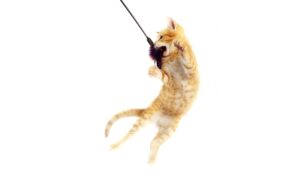Pet Products Market Proves Recession-Defiant
Glenn Polyn //July 2, 2020//
Press release: Packaged Facts
All four sectors of the U.S. pet industry—pet food, non-food pet supplies, veterinary services, and non-medical pet services—have been challenged by the coronavirus pandemic, whose economic downdraft may continue to be felt for years after the immediate medical crisis is past. Even so, due to regulatory restrictions and social distancing, pet services rather than pet products are bearing the brunt of the blow, reports Packaged Facts in the recently updated market research study U.S. Pet Market Outlook, 2020-2021: The COVID-19 Impact.
Because non-discretionary and also the largest pet industry sector by sales, pet food is the usual suspect for preserving through the current crisis the pet market’s reputation for being recession-resistant, if not recession-proof. But less likely market heroes have also emerged, including non-food pet supplies and pets other than dogs and cats.
Two main factors account for robust sales of pet products despite the current economic chaos, according to Packaged Facts’ just-released update of its annual U.S. Pet Market Outlook report. First, an expected uptick in pet adoption swelled into a surge of pet acquisition, generating a sales boom for higher-ticket pet durables such as habitats, carriers, bedding, along with novelty and pampering purchases such as pet toys and accessories. Second, sales have spiked for at-home, do-it-yourself dog and cat grooming and oral care products, driven by the marooned customers of veterinary clinics or professional salons offering these services. With these developments, Packaged Facts expects pet product sales to notch up 8 percent from $55 billion in 2019 to nearly $59 billion in 2020.
A boost to pet adoption was anticipated because ownership rates for dogs (though not cats or other types of pets) notched up in the wake of the Great Recession, rising from 34.9 percent of U.S. households in 2007 to 38.1 percent by 2011. “This pattern has repeated itself and then some,” explains Packaged Facts research director David Sprinkle, “with pet appeal unleased in full force.” Among U.S. adults, 5 percent adopted a dog in the three-month period generally corresponding to initial COVID-19 impact era—a windfall in a market where dogs account for two-thirds of product and service sales. In addition, given the unique current context of business shutdowns and stay-at-home orders, 4 percent adopted a cat, and a disproportionately high 4 percent adopted other types of pets—especially pet reptiles and small mammals.
Pet adoption has been notably high for “other” types of pets partly because of a multiple-pet-ownership trend. There’s no under-appreciation of dogs or cats afoot: among recent pet adopters, 90 percent have a pet dog, compared with 75 percent of pet owners overall, and 70 percent have a cat, compared with 56 percent of pet owners overall. But other types of pet have garnered more share of the limelight as pet-loving households added to their menageries.
This surge in pet adoption ties not simply to the recent stay-at-home period, but more specifically to having kids underfoot, given school closures and the disruption of public sports, recreation, and entertainment events—even play dates. While 8 percent of pet owners overall have adopted a pet because of the coronavirus pandemic, that rate notches up to 12% among those with children under age 18 at home.
Because pet ownership is a discretionary expense, multiple-pet households skew higher-income, adding fuel to the fire for the product and service premiumization trends that have long driven the U.S. pet market, and drawn the attention of capital investors. Moreover, COVID-19 impacts have amplified the already inordinate contribution of e-commerce to the pet market’s fortunes, given the online tilt to premium product selections and less-discounted pricing, compared with brick-and-mortar pet category retailers overall.
There is no certainty about how long the medical coronavirus crisis (and any resurgences) will last, how prolonged the job and wage losses will be, or how much the pandemic will alter the global market and political relationships on which U.S. economic growth relies. But few pet market observers will disagree that, in the years since 9/11, “pets as family” has given the U.S. pet industry a powerful and enduring boost. And with Americans now facing uncertainty on an unprecedented scale and spending more time at home, the best bet is that “pets as family” will gain additional momentum during this period of coronavirus pandemic and beyond.



















